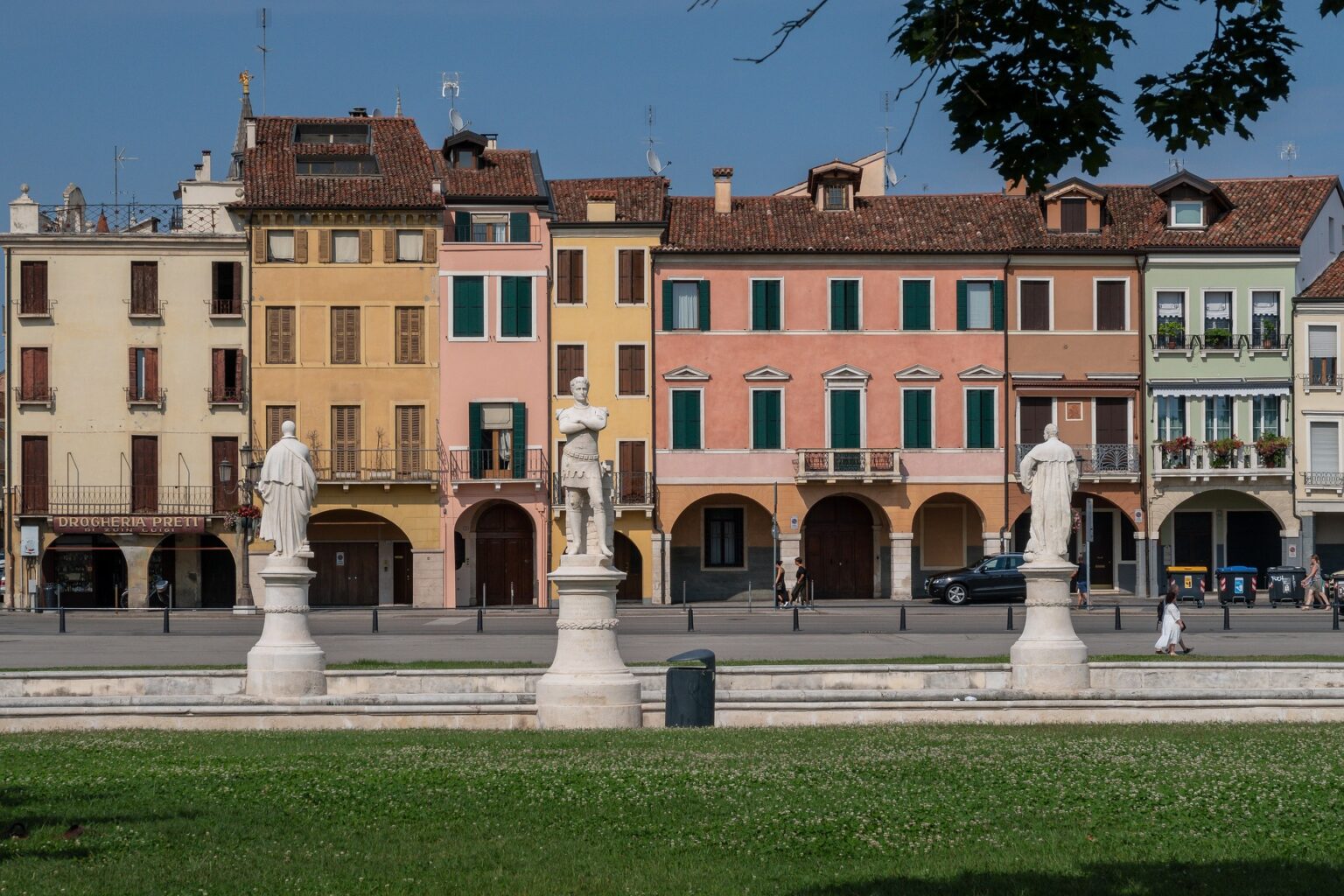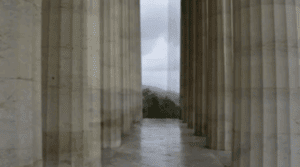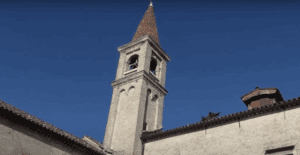Padova from Venice: Art, Saints, and Science in Italy’s Hidden Gem
🌿 Padova from Venice: Art, Saints, and Science in Italy’s Hidden Gem
Venice is a masterpiece that floats — magical, mysterious, and timeless. But just 25 minutes away by train lies another Italian treasure that few travelers truly explore: Padova (or Padua, in English). A city of saints and students, frescoes and flowers, Padova is where Italian art, science, and spirituality intertwine. It’s quieter than Venice, more grounded, and yet just as inspiring — the perfect off-the-beaten-path day trip for curious travelers.
Let’s wander through Padova’s cobblestone streets, step inside its sacred basilicas, stroll under ancient porticoes, and discover why this vibrant university town has been capturing hearts and minds for 800 years.
🎨 The Scrovegni Chapel: Giotto’s Painted Heaven
If Florence is known for Michelangelo and Venice for Tintoretto, then Padova belongs to Giotto di Bondone. Inside a modest 14th-century chapel, Giotto forever changed the course of Western art. The Scrovegni Chapel (or Cappella degli Scrovegni) houses a cycle of frescoes so vivid and human that they still astonish visitors seven centuries later.
Commissioned around 1303 by the wealthy banker Enrico Scrovegni as an act of penance, the frescoes depict scenes from the lives of the Virgin Mary and Christ — but what makes them revolutionary is their emotion. Giotto’s angels weep real tears. His mothers cradle their children with tenderness. His devils leer with frightening realism. It’s the moment European art stepped from the flat world of medieval icons into the three-dimensional world of human experience.
In 2021, the chapel became part of UNESCO’s “Padova Urbs Picta” listing — a network of medieval frescoes across the city that represent the birth of the Renaissance. To protect the delicate colors, entry is limited to small groups and advance tickets are required. Inside, silence falls as visitors gaze upward — the blue of Giotto’s sky still luminous after 700 years.
After your visit, step outside to the nearby Giardini dell’Arena, a peaceful park perfect for reflection — or for a quick espresso before continuing your exploration.
🙏 The Basilica of Saint Anthony: Faith, Miracles, and Art
No visit to Padova is complete without entering the heart of its spiritual life: the Basilica di Sant’Antonio. Locals simply call it Il Santo — “The Saint” — because no other name is needed. Dedicated to Saint Anthony of Padua, one of the most beloved figures in the Catholic world, this basilica has been a major pilgrimage site since the 13th century.
Construction began soon after the saint’s death in 1231, blending Romanesque, Gothic, and Byzantine styles into one of Italy’s most remarkable churches. Eight domes rise like lanterns above the skyline, inspired by St. Mark’s Basilica in Venice — a visual link between the two cities of faith.
Inside, masterpieces await. Donatello’s bronze statues stand beside marble altars, frescoes glow in soft light, and pilgrims kneel before the saint’s tomb, often leaving handwritten prayers. In the chapel of the Arca di Sant’Antonio, golden reliefs illustrate miracles attributed to him — healing the sick, saving the poor, even reattaching a severed foot (yes, really).
Whether you are religious or not, the basilica radiates a sense of peace and compassion. If you visit in June, you may witness the Feast of Saint Anthony on June 13th — when thousands of people fill the streets with candles, prayers, and music, celebrating the saint who became a symbol of generosity and love.
We often include the basilica on our Walled Towns & Palladio Tour, combining sacred art with architectural beauty — a journey that reveals the depth of Veneto’s spiritual and cultural soul.
🏛️ The Palazzo della Ragione: Where Power and Art Met
In the center of Padova stands one of Europe’s largest medieval halls: the Palazzo della Ragione. Built in 1218 as a courthouse and seat of civic power, it still dominates the Piazza delle Erbe and Piazza della Frutta — twin squares that have been Padova’s marketplace for over eight centuries.
The building’s vast interior is breathtaking. A single wooden roof arches over the enormous “Salone,” painted with more than 300 fresco panels depicting astrology, justice, and moral allegories. Some compare it to the Sistine Chapel of the Middle Ages — not for its technique, but for its scale and symbolism. Here, justice was once dispensed beneath the gaze of the zodiac.
Downstairs, the ancient market continues as it always has. Stalls overflow with cheese, prosciutto, truffles, and fresh vegetables from the Veneto countryside. Stop for a cicchetto (Venetian tapas) and a glass of Spritz — Padova’s own invention, by the way — before exploring the surrounding piazzas filled with students, street musicians, and laughter.
Padova’s daily markets are not tourist shows; they’re living, breathing traditions. If you’d like to experience them like a local, join our Cicchetti & Wine Tour — where we trace the Veneto’s food culture from Venice’s bacari to Padova’s squares.
🎓 Padova University: The Renaissance of Ideas
Founded in 1222, the University of Padua is one of the oldest and most influential universities in the world. It began as a protest — when students left Bologna seeking greater academic freedom — and became a beacon of enlightenment that shaped the modern age.
The university’s motto says it all: Universa Universis Patavina Libertas — “Padua’s freedom is universal.”
Among its most famous alumni and professors are Galileo Galilei, who taught here from 1592 to 1610, and Elena Cornaro Piscopia, the world’s first woman to receive a university degree (in 1678). It’s also where Andreas Vesalius revolutionized anatomy, publishing his groundbreaking studies that challenged centuries of medical dogma.
🏛️ The Palazzo del Bo
The heart of the university is the Palazzo del Bo, a 16th-century building filled with marble courtyards, carved wooden ceilings, and frescoed lecture halls. The highlight is the Aula Magna — where Galileo himself lectured under the gaze of the Venetian Lion. You can still visit his chair, preserved as if awaiting the return of its master.
🧠 The Anatomy Theatre
Equally fascinating is the Anatomy Theatre (Teatro Anatomico), built in 1594 — the oldest permanent anatomical theatre in the world. It’s a small, oval chamber of dark wood, where students once crowded around in seven tiers to observe dissections. The space feels almost sacred — a temple of knowledge where science defied superstition.
Guided visits to both sites are available, and tickets can be booked through the university or at the tourist office near Caffè Pedrocchi, the city’s historic coffeehouse.
☕ Caffè Pedrocchi: The Café Without Doors
Every Italian city has its café culture, but Padova has Caffè Pedrocchi — an icon of intellectual life since 1831. Located near the university, it’s known as “the café without doors” because it was once open day and night, welcoming thinkers, revolutionaries, and dreamers at all hours.
Here, students debated philosophy while writers and patriots plotted Italy’s unification. Today, you can sip its signature Caffè Pedrocchi — espresso topped with mint cream and cocoa — while imagining yourself among 19th-century poets and professors. The elegant interior still hosts live music and art exhibitions, keeping the spirit of curiosity alive.
🌺 The Padova Botanical Garden: Where Science Meets Serenity
In a corner of the old city walls lies another world — green, peaceful, and centuries ahead of its time. The Orto Botanico di Padova (Padova Botanical Garden) is the oldest university botanical garden on Earth, founded in 1545 by the Venetian Republic.
Its original purpose was both practical and revolutionary: to cultivate medicinal plants for students of medicine and pharmacology at the University of Padua. Over the centuries, it became a living encyclopedia of the natural world and a model for botanical gardens worldwide.
Today, the garden spans over 22,000 square meters, home to more than 6,000 species from every continent. Its geometric design — a perfect circle divided by paths — reflects the Renaissance belief in harmony between nature and knowledge.
🌿 What to See
- Medicinal Plants Section – The original core of the garden, where 16th-century scholars once studied the healing powers of herbs.
- Mediterranean Greenhouse – Home to olive trees, citrus, and aromatic plants native to the region.
- Tropical Pavilion – A modern glass dome showcasing exotic orchids, carnivorous plants, and the giant Amazon waterlily Victoria amazonica.
- Herbarium – One of Europe’s largest, preserving more than 2 million dried plant specimens used for ongoing research.
The garden is also a UNESCO World Heritage Site — recognized as the “birthplace of botanical science.” It’s a peaceful escape for travelers who want to rest between churches and museums, yet still feel connected to Venice’s intellectual spirit.
We often include a guided walk here as part of our Flavors of Veneto Tour, pairing it with a visit to Padova’s open-air markets and a tasting of local Prosecco.
🚶♀️ Wandering Padova’s Piazzas and Porticoes
Padova is best explored on foot. Its streets are lined with arcaded walkways that stretch for miles, offering shade in summer and shelter in winter — a gift from its medieval merchants. Every corner reveals something unexpected: a baroque fountain, a hidden fresco, a lively piazza echoing with laughter and violin music.
Two squares stand at the city’s heart:
- Piazza delle Erbe – A feast for the senses with colorful stalls selling seasonal fruit, cheese, and flowers.
- Piazza della Frutta – Once a medieval market, now a social hub filled with cafés and aperitivo bars.
Between them stands the majestic Palazzo della Ragione you saw earlier — connecting the past to the present. At sunset, locals gather here for a drink and conversation, a ritual known as fare l’aperitivo. Order a Spritz (born right here in Padova!) and some olives, and you’ll instantly blend in.
🌉 Prato della Valle: Where Venice Meets Rome
Just south of the historic center lies Prato della Valle, one of the largest and most beautiful squares in Europe. Once a Roman theater, it was transformed in the 18th century into an elegant elliptical park surrounded by canals and 78 statues of scholars and statesmen.
It’s a favorite local spot for picnics, evening strolls, and weekend markets. The reflections of the statues in the water give it a dreamy, almost surreal quality — especially at sunset, when golden light floods the square and the domes of nearby Basilica di Santa Giustina glow in the distance.
If you visit on a Saturday, you’ll find antique stalls, vintage books, and local artisans selling handmade crafts — perfect for picking up unique souvenirs after your Venice Boat Tour adventure.
🍝 Eating and Drinking in Padova
Padova’s cuisine bridges the hearty flavors of the countryside with the refinement of Venetian cooking. Don’t miss:
- Bigoli al ragù d’anatra – Thick pasta with duck sauce, a regional classic.
- Risotto al radicchio di Treviso – Creamy risotto made with local chicory.
- Tiramisu – Born nearby in Treviso — try it with a glass of sweet Recioto wine.
Pair your meal with wines from the nearby Colli Euganei hills — or join our Amarone & Verona Wine Tour for the ultimate Veneto tasting experience.
🚆 How to Get to Padova from Venice
- Trains depart Venice Santa Lucia every 20–30 minutes.
- Travel time: 25–40 minutes depending on the train type.
- Once you arrive, everything is walkable or reachable by tram.
For comfort and ease, private transfers can be arranged — perfect for couples or small groups who prefer a seamless experience with a licensed local guide.
💬 Insider Tips
- 🎟️ Book Scrovegni Chapel tickets in advance — access is limited and timed to preserve the frescoes.
- ☀️ Visit midweek — Padova’s markets and cafés are lively but not crowded.
- 📸 Best photo spot: Prato della Valle at sunset or the Basilica’s domes lit at night.
- 🧑🎓 Join a student tour of the University for a personal glimpse into academic life.
- 🍷 End your day with a Prosecco at Piazza dei Signori — the locals’ favorite square.
🌟 Why Padova Is the Perfect Day Trip from Venice
Padova feels like Venice’s younger, more down-to-earth sibling — less crowded, more local, but just as full of wonder. In one day, you can witness the dawn of Renaissance art, touch the spirit of a saint, walk under medieval arches, and sip coffee where Galileo once lectured.
It’s a city that rewards curiosity and invites reflection. By evening, as your train glides back across the lagoon, you’ll carry a new appreciation for the Veneto — not just its beauty, but its intellect, its faith, and its warmth.
📍 Plan Your Padova Day Trip with Tour Leader Venice
At Tour Leader Venice, we craft private, customizable experiences that take you beyond the obvious. Our Padova & Palladian Wonders Tour combines art, history, and local flavor — the ideal Venetian day adventure.
🚆 Explore Tours Outside Venice
🍷 Discover the Flavors of Veneto
Padova is not just a day trip — it’s a journey through time, thought, and tranquility. Let’s explore it together, Venetian-style.
FAQs
How far is Padova from Venice and what’s the best way to get there?
Padova is only 25–40 minutes by train from Venice Santa Lucia, with departures every 20–30 minutes. Trains arrive at Padova Centrale, from where you can walk or take a quick tram ride to the historic center. It’s one of the easiest and most rewarding day trips from Venice, perfect for art and history lovers.
What should I not miss on a day trip to Padova?
Start with Giotto’s Scrovegni Chapel, then visit the Basilica of Saint Anthony, the Palazzo della Ragione, and Prato della Valle, one of Europe’s largest squares. Don’t miss a coffee at Caffè Pedrocchi and, if time allows, explore the University of Padua and its Anatomy Theatre — where Galileo once lectured.
Do I need tickets to visit the Scrovegni Chapel?
Yes. Visits are limited to small groups and must be booked in advance to protect Giotto’s frescoes. Reservations can be made online or at the Eremitani Museum, which manages entry to the chapel. Arrive at least 15 minutes before your scheduled time, as visitors must pass through a climate-controlled chamber before entering.






